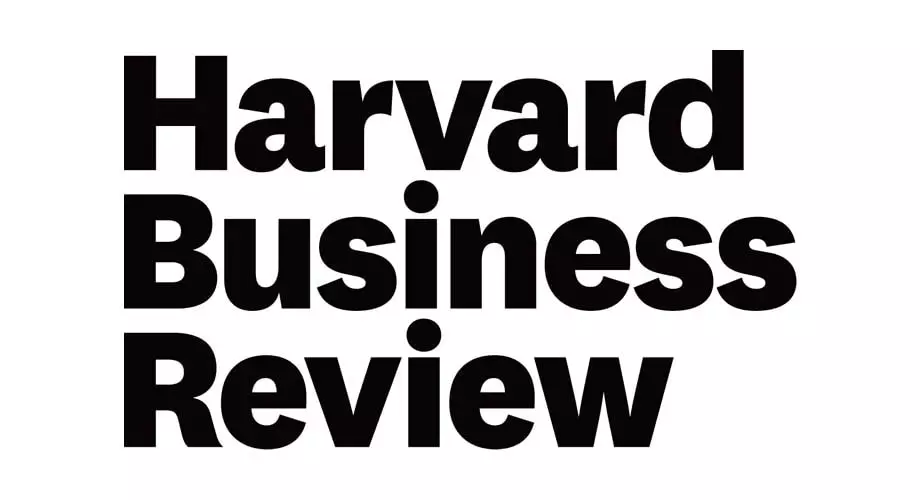Originally published April 4, 2022 in the Harvard Business Review.
By Michelle A. Barton, Bill Kahn, Sally Maitlis, and Kathleen M. Sutcliffe
As organizations scramble to respond to the rampant stress, burnout, and mental health crises exacerbated by the Covid-19 pandemic, many corporate wellness programs have focused on supporting self-care — gym memberships, meditation apps, or even paid time off. As researchers who study employee well-being, resilience, and psychological health, we applaud the genuine concern.
However, we are also increasingly concerned that the emphasis on self-care may undermine, rather than support, employee wellness.
 The crux of the problem lies in the fact that human well-being is not achieved alone: our psychological health is grounded in attachment to and acceptance by others. We are, essentially, social animals. In fact, recent studies suggest that feeling disconnected from others is as significant a health risk as smoking, excessive alcohol consumption, and a lack of physical activity.
The crux of the problem lies in the fact that human well-being is not achieved alone: our psychological health is grounded in attachment to and acceptance by others. We are, essentially, social animals. In fact, recent studies suggest that feeling disconnected from others is as significant a health risk as smoking, excessive alcohol consumption, and a lack of physical activity.
Human connections are especially critical for addressing the effects of stress, anxiety, burnout, and other forms of workplace distress. When organizations offer individual solutions, it can send the message that employees are on their own when it comes to their mental health. Worse yet, the resulting disconnection is self-reinforcing. As employees are left to manage their pain alone, they can become trapped in destructive cycles of anxiety and shame that make it harder to foster real connections. These patterns are often worsened in national and organizational cultures that revere self-sufficiency and independence.
Taken together, the very wellness efforts that organizations create, with their slate of classes and mobile apps, can become subtle forms of abandonment in the guise of support. The end result is an epidemic of loneliness and mental health challenges that is further exacerbated by virtual work.
We argue that the solution requires a totally different approach to workplace suffering. Rather than focusing on self-care, we need to be better at taking care of each other. This begins by framing employee distress as a collective rather than individual problem. It then entails creating and fostering what we call “relational pauses.” This approach allows organizations to build more substantive and enduring foundations for genuine well-being and, ultimately, operational effectiveness.
Two Principles for Creating the Foundations of Workplace Well-Being
Principle 1: Frame adversity as belonging to the collective.
Our research suggests that when groups frame distress or adversity as a collective rather than individual problem, the resulting communal coping strategies bolster genuine connection and better recovery.
For example, in a recent study of adventure racing teams, we found that when teams framed setbacks (e.g., illness, injury, technical breakdowns) as “belonging” to the whole team — even when only some members were affected — they increased their communication and drew closer together, physically and socially. Most importantly, they acknowledged and helped one another process the emotional fallout from adversity. In doing so, they distributed the strain across members so that no one person became isolated or overwhelmed.
By maintaining and even strengthening their connections, they also improved their function as a group. They were able to work together to address the adversity, often by combining their physical and intellectual resources in novel ways or by reframing their strategy to better leverage their current capabilities. For example, when one biker careened off the side of a mountain, his teammates found him hanging from a tree, with his bike dangling below. By creating a human chain down the hillside they were able to pull him and his bike back up.
In contrast, when teams viewed adversity as something to be coped with individually, members became isolated with their own pain, fear, or anxiety. They stopped communicating, became more physically and socially distanced, and, in most cases, team functioning declined, often leading to mistakes and increased adversity.
Principle 2: Create and foster relational pauses.
Once distress is recognized as a collective problem, it becomes easier to develop appropriately collective solutions. At the core of these solutions is the creation and fostering of what we call relational pauses. Rooted in social psychology, the purpose of this pause is to bolster genuine and authentic connections between employees that enable individual well-being.
Practically speaking, a relational pause is a temporary, often brief, break from ongoing task work, in which people are invited to ask and answer the question, “How is our work affecting us as human beings?” In some ways, this is similar to other reflective breaks a group might take — medical teams use a “safety huddle” to check that everyone is clear on an upcoming procedure, and military teams use a “tactical pause” to verify data and check assumptions. However, unlike these, a relational pause is designed to provide a window into the emotional and relational realities of work.
Importantly, the goal is not psychoanalysis or personal therapy, and it is not a “pity party” or “whining.” The process does not even require people to be friends. Rather, it is discussion with a purpose: to surface and acknowledge the emotional reality of work that might otherwise be ignored, and to actively help group members engage productively with that reality. As some members describe how they were impacted by work situations, others validate the reality of that experience by listening actively and showing compassion, especially when their own experience is different. Through this collective engagement, genuine connections are built.
How “Struggling Well” Together Creates Well-Being for All
When adversity is framed as collective, individuals experience themselves as part of a joint struggle and are better able to look at each other with compassion and empathy. There is a sense of “we are all suffering, but by working through this together, we are struggling well.” But it is this work of relating to others that creates well-being. Specifically, groups engage in three critical processes:
They surface more authentic and complex identities.
As members share their experiences candidly and honestly, they come to see one another and the situation in more authentic and complex ways. They move away from the simplistic labels and blaming that often arise as defensive mechanisms during difficult times. Rather than characterizing each other as entirely right or wrong, victim or aggressor, they can come to see each other as having both strengths and weaknesses and shades of gray.
By sharing their lived experience, the group paints a picture of their situation in more realistic (and less extreme) terms, and members can accept and be accepted as who they really are in that context, not the villain or hero of a simplistic story. This not only builds individual well-being by providing a sense of security, inclusion, and belonging but it also helps the group as a whole engage in more sophisticated and mature interactions.
They facilitate emotional dispersion and processing.
Heightened emotions, especially negative ones, can be overwhelming. When in the grip of anxiety or other strong feelings, it is difficult to think straight or regain equilibrium. But the very act of describing an emotional experience — and receiving compassion and acceptance in return — helps disperse the emotion across all the group members, as each shoulder a little of the burden. The discussion also helps members make sense of their experience and begin to process what happened. For example, knowing that others are likely suffering too helps free them from shame. As members feel less overwhelmed by emotion, there is more capacity for clear thinking and problem-solving.
The team learns to recognize and reflect on their behavior.
As teams practice relational pauses, they get smarter about their own dynamics. They are able to understand each other and the situations they face in more nuanced ways, and recognize when adversity-triggered emotions may be leading them astray. Perhaps most importantly, people learn to pause so they have the space and time to reflect, and to make deliberate choices about their actions towards one another and how they will struggle well together.
These three processes build on and reinforce each other, fortifying the connections that are so critical to well-being. In the deepest sense, members become part of a group that cares for them as the unique, flawed, struggling but valued humans they are. There is no more essential foundation for wellness.
Take, for example, Redemptive Design Associates (not its real name), a design consultancy specializing in repurposing unoccupied office spaces into artist space. For every potential project, RDA consultants spend weeks preparing a design proposal. But of course, they don’t always win the contract. In the aftermath of such a loss, those involved often struggled with anger, sadness, and frustration — which manifested in recriminations, hidden blame, and other dysfunctional behaviors.
In response to this ongoing problem, the firm developed a routine that involved enacting a relational pause around failed pitches. Now, every time a pitch is lost, all those involved gather together to reflect on the experience. These conversations begin with members sharing and processing their frustration, sadness, hopefulness, and other emotions felt during and after the pitch process. In retelling these experiences, they come to see one another in more authentic and complex ways, as both contributing to as well as hurting from such an outcome.
As a result, they are better able to help each other process and cope with the letdown. The team can move to the task of analyzing what happened from an operational perspective to improve the chances for their next proposal. In the end, the consultants are more connected through their difficult experiences rather than fragmented because of them.
Enabling Relational Pauses In Your Organization
Finding the time and space to enact relational pauses may seem challenging. But there are several common situations when connecting in this way is well worth the effort.
As a routine part of group meetings.
Making relational pauses a routine part of regular status meetings or pre-procedural briefings can help normalize the practice in advance of when you most need it. Use meetings to find out how work is affecting people. You might ask “What gives you energy?” “When do you feel engaged?” “What is creating anxiety or frustration?” Listen deeply and respond with empathy not with defensiveness or judgement. Look for themes over time and share what you observe. Is one set of processes a source of frustration? Are people feeling isolated? It can be powerful to actually name these: “Technology frustrations” or “When clients drive us crazy.” Invite employees to describe their experience of each theme so they see they are not alone.
When emotions are escalating.
If you feel that group members are getting heated, uncivil, or are checking out, take a few moments to explicitly step away from the task to focus on what is happening on the team. Call a “time out” and ask what people are experiencing, focusing first on getting them to simply tell their stories — what happened and how it is impacting them — and encouraging others to listen. Acknowledging the validity of different experiences is especially important.
Also avoid jumping to problem-solving and solutions. Managers need to first step back and look at the conversation like a jigsaw puzzle that they, along with the group members, can fit together to understand the larger picture. It is in that process that individuals feel more connected. Then, ask how these experiences are impacting the group process before finally facilitating a conversation around improvements. As the team suggests new ways of interacting and moves towards solutions, this is a natural time to call a “time in” to turn your attention back to applying the learning to the task at hand.
During these conversations, insist on civility and compassion and reinforce it when you see it. This is not the time for judgment or blaming, so if you hear this creeping in (or see more passive aggressions like eye rolling), call it out and set the norms. Praise people who demonstrate vulnerability and who show compassion — and make sure you are role-modeling non-judgmental listening.
As a loss ritual.
Work that is rife with loss (particularly in caregiving organizations, like hospitals and public welfare organizations) offers the opportunity for people to develop rituals that enable emotions to be named rather than dismissed. These moments provide opportunities to set an example and speak with candor. If you find that people are hesitant to share their experience, start by sharing your own. Model vulnerability, sharing how what’s been lost affects you as a human being. Resist the temptation to reach for soothing simplicities and admit that there are no easy answers. Instead, work to name hard-to-articulate feelings, acknowledging the pain you may be experiencing. Then ask others to do the same.
For example, in working with the palliative care unit of a large, northeastern U.S. hospital, we found that employees created a routine for enacting a relational pause to help cope with grief. Whenever a patient passed away, staff members came together at the end of the day to talk about what that experience was like for them. The medical director led the meeting, keeping the focus on emotions and asking staff members what feelings they were each left with after the passing away of the patient. In these discussions, the medical director sought to recognize all experiences and emotions as valid and understandable. Over time, other unit members learned to do this for themselves and for one another.
As a part of wellness initiatives.
Even traditional wellness initiatives can be deepened and expanded to include relational pauses. Yoga and meditation, book discussion groups, spin classes, and the like can be repurposed to add a focus on naming and working with the emotional realities of work. Such experiences could include built-in periods of time for collective sharing and reflection. In this way, the activities of self-care, rather than acting as a reinforcement for individual accountability, can become vehicles for genuine connection.
For example, the London office of Pacific Life Re, a global financial services company, holds “tea & talk” meetings themed around topics of common concern for their employees, including working from home alone, looking after their mental health, and caring for others. These are hosted by one of the firm’s “wellness champions” but have no fixed agenda: the hosts simply hold the space for people to share their experiences and worries. Through participating in these gatherings, people feel less alone with their struggles, and see what they have in common with others at different levels and in different parts of the business.
You Can Talk About Emotions at Work
It is not unusual to hear managers say, “We can’t talk about emotions at work.” To this we have two responses. First, as with any kind of difficult discussion, it takes leadership and practice to change norms. But if we have learned nothing else from the past few years, “we don’t work that way” is no longer a legitimate excuse for resisting change — particularly as people are still struggling with the loneliness and isolation of the pandemic.
Second, the emotional experience of work does not stop impacting how work gets done (or fails to get done) just because you don’t want to talk about it. Avoiding discussions about the emotional fallout of workplace challenges is like ignoring an accounting error in the hopes that it will eventually go away. It doesn’t change anything and just leaves you less equipped to deal with the inevitable consequences. Smart leaders encourage employees to surface and collectively work through all workplace challenges.
Moreover, our research shows that facilitating relational pauses throughout your work environment can make a difference that goes beyond improving individual well-being. This includes improving persistence and resilience, communication and knowledge sharing, and coordination and systems thinking.
We are moving into a time when connections at work are seriously threatened. While the pandemic may be subsiding, many organizations are returning to a “new normal” that involves more remote work, more gig workers, and fewer opportunities to connect. Self-care will always be a component of mental health, but leaders who want to truly address employee well-being need to move beyond the individual-centric view of adversity. Wellness requires incorporating genuine connection into the very heart of how work gets done. This begins by acknowledging our collective ownership of suffering. When we come together for a collective purpose or mission, we are mutually accountable not only for the work, but also for the emotional experience of doing that work.
Boost Student Wellness with the IHT ZONE heart rate monitor:




